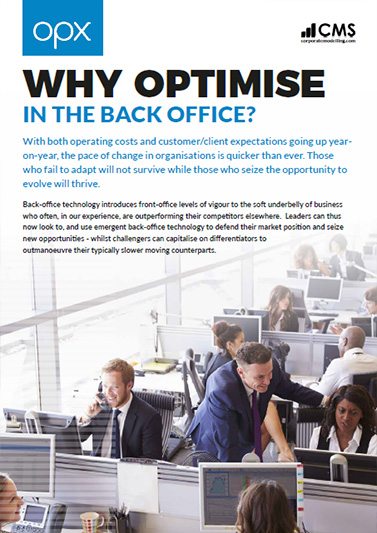Machines will be performing more than half of work tasks by 2025, says World Economic Forum. More than half of the world’s workforce will need to be taught new skills in the next four years, according to research by the World Economic Forum (WEF).
The organisation says 54% of employees will need to be upskilled or reskilled by 2022, and that by 2025, machines will be performing more than half of work tasks, compared with the 29% they do today.
Klaus Schwab, founder and executive chairman of the WEF, said: “It is critical that business takes an active role in supporting their existing workforces through reskilling and upskilling, that individuals take a proactive approach to their own lifelong learning, and that governments create an enabling environment to facilitate this workforce transformation. This is the key challenge of our time.”
In 2017, machines performed only 29% of total task hours in the workplace, but this is predicted to rise to 42% in 2022 and to 52% in 2025.
According to the research, half of the employers expect to reduce their workforce by 2022 because of automation, and all industries expect to suffer skills gaps.
However, 28% expect automation to create new roles in their organisations, and the WEF found that more jobs would be created by 2022 than would be replaced by automation. It forecast that globally, 133 million new roles would be created as a result of automation, while 75 million would be displaced by technology.
Businesses cited three main approaches for dealing with the impact of automation on their workforce – hiring new staff with the skills needed for new technologies, automating work tasks completely, or retraining existing employees.
As the world becomes more digital, people in all roles and industries now need at least a basic level of digital skills, but more than half of companies said they would only reskill employees in key roles, and one-third said they would only give new skills to workers who were at risk.
More than 80% of the companies involved in the research said they would use an internal specialised department to give employees new skills, and half said they wanted to use external education institutions.
However, only 34% of firms said training delivered by employers would result in staff gaining an accreditation that would be recognised and usable elsewhere.
Almost half said they expected to hire more specialist contractors to cater for the skills lost through automation.
An emphasis on softer skills, such as creativity and communication, has been growing in recent years, and research has found that the types of job likely to be automated include accounting, payroll and data entry, while roles such as data analysts, data scientists, software developers and social media specialists are on the rise.
The WEF found that roles that require “human skills”, such as sales, marketing and customer service, will rise, and it has been highlighted in the past that the type of jobs less likely to be automated are those that require emotional intelligence.
Increasingly, firms are looking for recruits with both soft and technical skills to cope with how the world of work is changing as automation and technology are adopted.
The WEF recommended collaboration between business, government and employees themselves to ensure the workforce has a positive outlook for the future. This could be done by ensuring the education system reflects the direction that automation is taking the labour market, developing an ecosystem for lifelong learning, encouraging job creation, and ensuring that current workers are given the new skills they need to perform future roles, it said.
By Clare McDonald, published by ComputerWeekly.com







 Thank you for your interest in our whitepaper. You can download Workforce Optimisation vs Workforce Management by clicking the button below.
Thank you for your interest in our whitepaper. You can download Workforce Optimisation vs Workforce Management by clicking the button below. Thank you for your interest in our case study. You can download the HCL IBS Case Study by clicking the button below.
Thank you for your interest in our case study. You can download the HCL IBS Case Study by clicking the button below. Thank you for your interest in our case study. You can download the ReAssure Case Study by clicking the button below.
Thank you for your interest in our case study. You can download the ReAssure Case Study by clicking the button below. Thank you for your interest in our case study. You can download the Student Loans Case Study by clicking the button below.
Thank you for your interest in our case study. You can download the Student Loans Case Study by clicking the button below. Thank you for your interest in our case study. You can download the Principality Building Society Case Study by clicking the button below.
Thank you for your interest in our case study. You can download the Principality Building Society Case Study by clicking the button below. Thank you for your interest in our whitepaper. You can download WorkFlow vs WorkForce Management by clicking the button below.
Thank you for your interest in our whitepaper. You can download WorkFlow vs WorkForce Management by clicking the button below. Thank you for your interest in our whitepaper. You can download Homeworking in Financial Services Operations by clicking the button below.
Thank you for your interest in our whitepaper. You can download Homeworking in Financial Services Operations by clicking the button below. Thank you for your interest in our whitepaper. You can download Workforce Optimisation for the Back Office by clicking the button below.
Thank you for your interest in our whitepaper. You can download Workforce Optimisation for the Back Office by clicking the button below. Thank you for your interest in our whitepaper. You can download Operational Workforce Management: Build or Buy? by clicking the button below.
Thank you for your interest in our whitepaper. You can download Operational Workforce Management: Build or Buy? by clicking the button below. Thank you for your interest in our whitepaper. You can download Homeworking & Back Office Workforce Optimisation by clicking the button below.
Thank you for your interest in our whitepaper. You can download Homeworking & Back Office Workforce Optimisation by clicking the button below. Thank you for your interest in our whitepaper. You can download Why Optimise in the Back Office? by clicking the button below.
Thank you for your interest in our whitepaper. You can download Why Optimise in the Back Office? by clicking the button below.